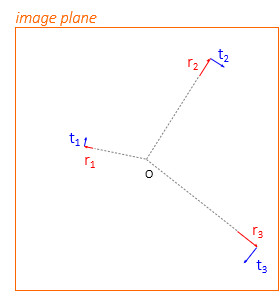7. Aberrations and Distortions
a. Aberrations
Aberrations degrade image quality causing blurriness and loss of detail. There are three primary aberrations:
(1) Spherical, Figure H-25. Caused if either lens surface is not a perfect sphere. Light rays striking the lens at different locations will not come to focus at the same image distance.
(2) Astigmatism, Figure H-26. Generally the results when surface curvature in one direction differs from curvature in another. Perpendicular objects focus at different image distances.
(3) Chromatic, Figure H-27. A light ray is composed of different component colors, each with their own frequency. Each color frequency refracts slightly differently. The blue component refracts most, with a shorter image distance, red the least with the longest image distance. A rainbow is a naturally occurring example of chromatic aberration.
 |
| Figure H-25 Spherical |
 |
| Figure H-26 Astigmatism |
 |
| Figure H-27 Chromatic |
b. Distortions
Distortions affect image geometry. There are two distortions, Figure H-28:
(1) Radial, r's in Figure H-28. Faulty lens geometry alters the emergent light ray displacing it radially from the image center, o.
(2) Tangential, t's in Figure H-28. The optical axes of individual lenses in a compound lens must coincide. A misalignment will cause the emergent light ray to displace perpendicularly to the radial line from the image center, 0.
 |
| Figure H-28 Distortions |